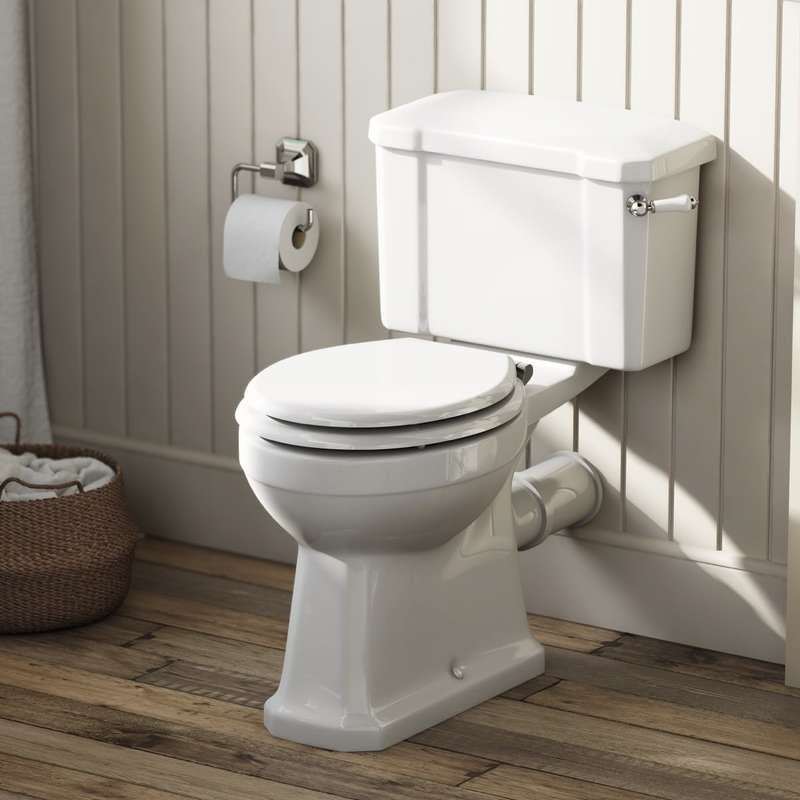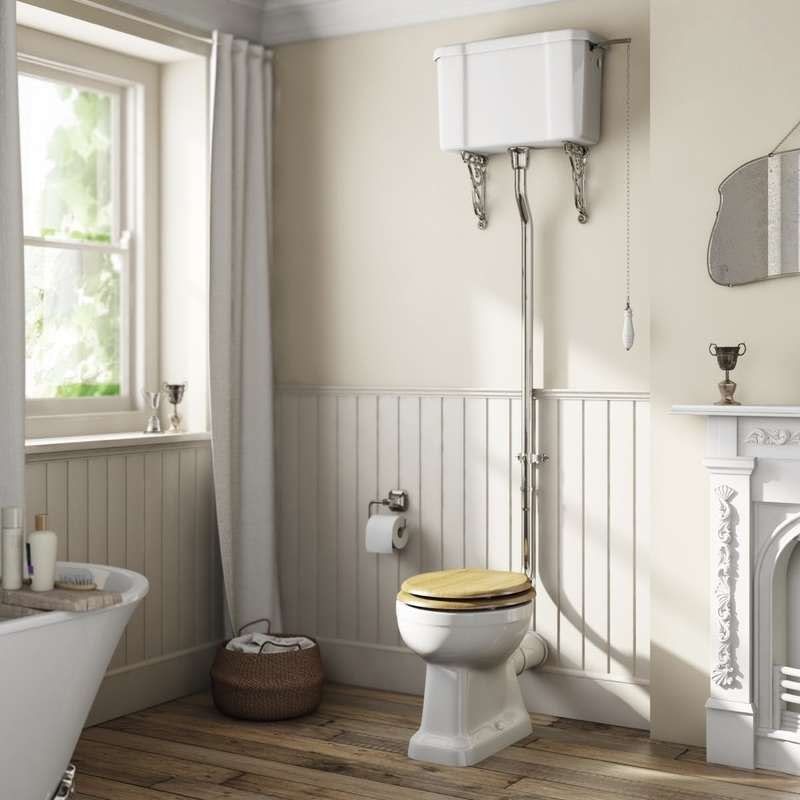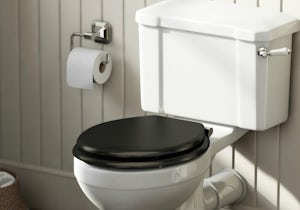The humble toilet is something many of us take for granted. However, the next time you flush, just pause a minute to marvel at what is a truly incredible feat of human engineering.
Whilst it doesn't quite evoke the same sense of wonder that an aeroplane or skyscraper might, the invention of the toilet has, in its own small way, revolutionised the way we live our lives.
The history of the toilet
The idea of a room in a home dedicated to personal hygiene and grooming is, strictly speaking, a recent one. For the most part, houses built much before the turn of the century didn't have bathrooms. So, in the span of about 100 years, the modern bathroom has evolved from a novelty into an almost-universal residential fixture. But there has always been a need for disposing of human waste, as well as a need for providing facilities for bathing and grooming. How those human needs evolved into the modern bathroom is a story about both technology and culture.
The traditional toilet has come a long way since its earliest inceptions
For a visual reference for the brief history of the toilet, see our history of the toilet infographic which shows an illustrated timeline. You can also find further reading if you are interested in more about the history of the bathroom.
Thomas Crapper
The Englishman with the unfortunate surname, Thomas Crapper, often gets credit for inventing the flushing toilet, and he undoubtedly was a major player in its development. His valve-and-siphon design was patented in 1891, and his company manufactured water closets that found wide acceptance all over the UK in the decades preceding World War I. His toilets—imprinted with "T. Crapper Brass & Co. Ltd."—inspired a generation of young American soldiers stationed in the UK during World War I, and they returned to America with a new slang term for the relatively new household fixture. But was Crapper the father of the so-called crapper?
Let's put it this way: Crapper didn't one day sit down in an outdoor privy and decide that what the world really needed was an indoor toilet. His product was simply another refinement of a design problem that the Victorians, in particular, had been puzzling over: how to build a flushing water closet that would efficiently and sanitarily remove waste without allowing dangerous sewer gases to enter. When Crapper refined his design, flushing water closets weren't exactly a new idea. For example, Queen Elizabeth I's godson Sir John Harrington had designed one for her use in 1596, although it never caught on with the rest of English society, royal or otherwise, and was considered to be more of a novelty than a practical invention, especially in the absence of an extensive sewer system.
Non-flushing water closets
Non-flushing water closets—portable pieces of furniture with removable containers for waste—became the standard in pre-Victorian Britain, though many households continued to rely on the backyard privy. The problem of waste disposal—whether from a chamber pot or from an overused hole in the ground—remained.
The Victorians made the connection between unsanitary conditions and disease that the Elizabethans hadn't and developed municipal sewer systems to try to keep their cities cleaner. The problem was that they didn't have a good way of connecting individual households to the system. Non-flushing water closets could be dressed up, but their contents couldn't be taken out. In the late 18th and early 19th centuries (about the same time the sewers were built), English patents were granted for several different types of water-closet valves, but their flushing actions were pretty inefficient. The wall mounted cistern that became popular in the 1870s vastly improved the situation because it provided a large volume of water under more pressure. Water-closet bowls remained a problem, though, because their rudimentary traps didn't do a very good job of either letting waste go down the drain or keeping sewer gases out of the building. At first these bowls were made of earthenware and glazed with sometimes-elaborate designs. In 1885, Thomas Twyford built the first vitreous china toilet, inspiring competition from other notable English potteries such as Wedgwood and Doulton; it wasn't long before vitreous china became the standard for the fledgling industry.
American inventors were also seeking solutions to the problem of building a sanitary water closet. As early as 1875, James Henry and William Campbell patented a plunger-type water closet; over the next 50 or so years more than 350 applications for patents for various types of water-closet designs were received by the U.S. patent office. In 1907, Eljer Plumbingware Co. introduced the first American vitreous china water closet, despite popular scepticism about the strength of a ceramic product for such a purpose.
With the invention of the sanitary flushable toilet—the fixture that made the modern bathroom possible—the crowded urban masses no longer needed to rely on chamber pots and open windows and backyards to dispose of their waste. Nor did they have to fear sewer gases like methane seeping back up into their homes and igniting explosively.
The high level toilet was the mainstay of typical Victorian bathrooms or water closets
Enter the indoor bathroom
The first indoor bathrooms that were made possible by the refinement of the toilet were communal affairs shared by many people. Previously, water closets were portable, so a dedicated space for their use wasn't necessary. More elaborate residences might have had a dedicated dressing room that contained a water closet, a moveable tin or iron bath, and a washstand, but this type of centralised "bathroom" didn't become widespread until indoor plumbing and permanent water closets gained acceptance toward the end of the 19th century. Within a few short decades, the traditional Victorian toilet became a permanent fixture as bathrooms proliferated and portable washstands and baths gave way to dedicated spaces. It didn't take long for indoor plumbing to gain acceptance as a good idea, and by the 1920s, American building codes required indoor bathrooms in all new single-family residential construction.
Then came the sewage systems
Interestingly, the modern toilet and its associated plumbing was as much a response to urban industrialisation as it was a result of the manufacturing technology that industrialisation made possible. In a rural society, an indoor toilet may be a convenience, but it isn't essential. In a crowded urban environment, however, the sanitary elimination of human waste becomes a real problem, and in the absence of sufficient soil to contain and break down human waste, water became the only other medium available to carry it away. The development of municipal sewage systems in London and Paris in the 18th and 19th centuries was a direct response to the threat of disease that came from increasing population densities and inadequate waste disposal. The modern world needed the modern toilet not so much for convenience but for its own survival.
Modern toilet design
Unfortunately, while 19th century engineers refined the process of using water to flush away waste, people living in the 20th century found out that it wasn't possible to just flush their problems completely away.
Widespread contamination of large parts of the world's freshwater supplies is one of the legacies of the modern flush toilet. So the evolution of the toilet continues, necessitated by the need to use less water and so place less of a demand on water resources. Perhaps the next revolution will occur in the development of waste treatment systems that minimise our reliance on water. In the meantime, look for technology to become increasingly water-conscious, both in toilets and in other bathroom fixtures. The work begun by Thomas Crapper and the others isn't over yet.
Beyond the bathroom toilet
If we think of the bathroom as simply a response to the practical need to manage human waste, then bathrooms have a pretty short 100 year or so history. But bathrooms of some sort existed long before the invention of the modern flushable toilet. Early on, humans recognised the personal benefits of a cleansing soak in warm water. And in any society where people live in close proximity, personal hygiene is more than an issue of vanity.
In this regard, bathrooms—in the sense of a room that is devoted to bathing and personal care—are as old as civilisation itself. Evidence of sophisticated bathing facilities dating back to 2000 B.C. have been found in the palaces of Knossos and Phaistos on the island of Crete. Hittite houses in Anatolia (c. 1400 B.C.) contained paved washrooms with clay baths. The Greek cities of Pylos and Tiryns had bathrooms with water supply and drainage systems, and later Greek vase paintings indicate that the Greeks used showers. Bathhouses in India, common in palaces, monasteries, and some wealthy homes as early as 200 B.C., contained steam rooms, sitting areas, and swimming pools.
Roman baths
Of course, the Romans mastered the art of the bath. As early as the 3rd century B.C., elaborate baths were being included in the villas and townhouses of wealthy Romans. With separate rooms for damp and dry heat and warm and cold baths, the buildings were heated with hypocausts, furnaces with flues extending through the floors and walls of the building. The furnaces also heated boilers that supplied hot water. The public baths, or thermae, of imperial Rome expanded on the facilities of the smaller private baths and necessitated the construction of reservoirs and aqueducts to supply the enormous quantities of water needed. These baths were also heated by hypocausts and had dressing rooms, warm rooms, hot baths, steam rooms, recreation rooms, and cold baths. Hot-spring spas in far-flung locations of the Roman Empire, such as Bath in England and Aix-les-Bains in France, are still in use today.
Some might argue that the bathing rituals of the Romans went too far, and in part the asceticism of the early Middle Ages was a reaction to the hedonism of imperial Rome that found such expression in their public bathhouses. Many of the early Christians took an entirely different viewpoint than the Romans about the body, regarding it as a place of sin to be conquered by the spirit. Dirt and disregard for excessive personal hygiene were regarded as appropriate responses to a sinful world, while bathing and personal luxury were regarded as excessively (or sinfully) indulgent—attitudes that to this day still find occasional expression in our culture. But as the plagues that periodically ravaged Europe during the Middle Ages demonstrated, personal hygiene plays a practical as well as a spiritual role.
In fact, despite the ascetic attitude toward bathing, centralised bathing facilities continued to exist in Europe. Many monasteries had fairly sophisticated systems to supply, distribute, and carry away water. Medieval castles and palaces generally incorporated a system of water supply and drainage, even if the sewage reservoir did happen to be the castle's moat. Henry III's (1217-1272) palace at Westminster had a bathhouse with hot and cold running water. And other cultures outside the western European tradition continued to regard bathing and personal hygiene as acceptable and culturally significant activities. Hammams, or public baths, have long been a fixture in Islamic society. And the Japanese have always regarded a long soak in a hot tubs both ritual and cleansing activity.
Early American settlers brought European attitudes toward bathing with them to the New World, continuing to view excessive bathing as an unnecessary indulgence. In part, this was because of the religious beliefs in some of the early colonies, but it was also a practical response to life on the frontier. However, by the middle of the 19th century there was a permanent tub in the White House, and bathing had evolved for many into a Saturday night ritual, whether they felt they needed it or not.
Early household baths
Originally, baths were unwieldy metal-lined wooden affairs that were brought into the kitchen for the weekly event and filled with hot water from the stove to be shared by everyone that needed a bath. But early enameled cast-iron baths began to appear in the second half of the 19th century, although demand for them was limited by their weight and the scarcity of dedicated bathroom spaces. These baths were - and still are heavy. John M. Kohler, founder of the Kohler Co., got his start manufacturing cast-iron farm implements, but he saw an opportunity to sell to a new market. He modified a combination horse trough/hog scalder by enameling it and adding legs, then sold it as a bath to meet the growing demand for bathroom fixtures around the turn of the century.
So bathrooms evolved as a response to fundamental needs for personal hygiene, as well as an expression of available technology and cultural standards. And in the short half-century between 1875 and 1925 - the period of time between when indoor plumbing began to be widely available and when it became almost universal—our attitudes toward privacy and modesty changed significantly. What were once communal and family activities have become very personal and private activities. Whereas once single bathrooms served several families in urban apartment houses, now it is not unusual, nor even considered particularly extravagant, for households to have one bathroom for every bedroom.
Different types of modern toilet
If you would like to view VictoriaPlum.com's extensive range of toilets please visit the following links:
For instructional DIY guides, please see the following links:
More on the history of the bathroom
Want to find out more about the history of the bathroom and all it contains? Simply click on any of the links below.
- A brief history of bathrooms - From the tin bath to indoor loos
- Why do we say “Going to the loo”?
- In from the cold: the rise of indoor toilets
- The history of showers
- Immerse yourself in the history of baths
- Running through time: A history of taps
- Spreading warmth around the world: The history of the radiator








